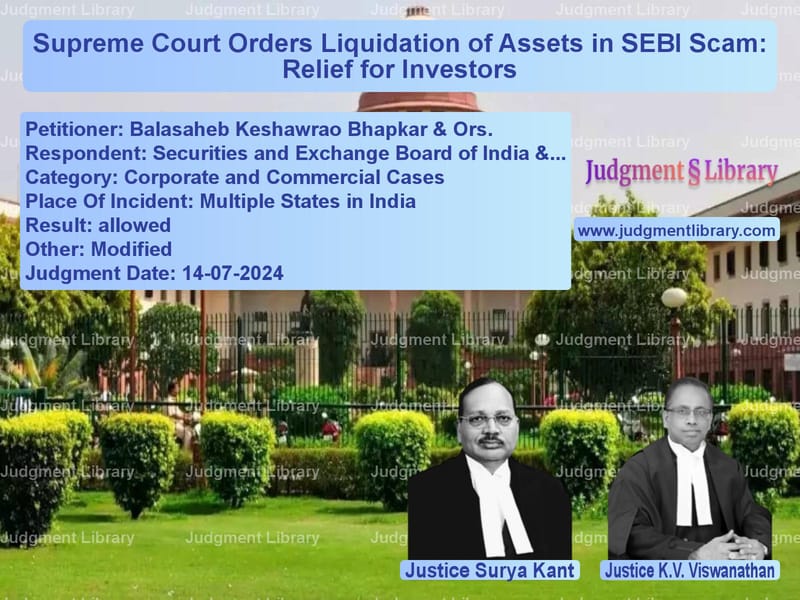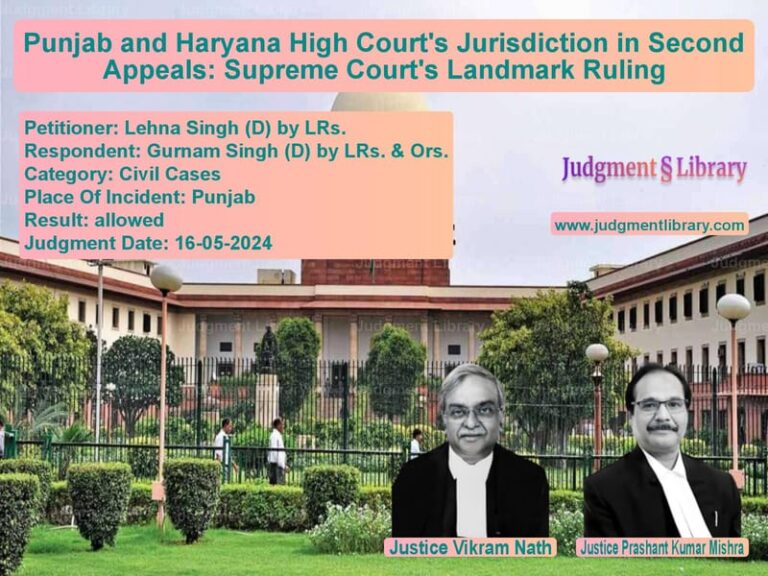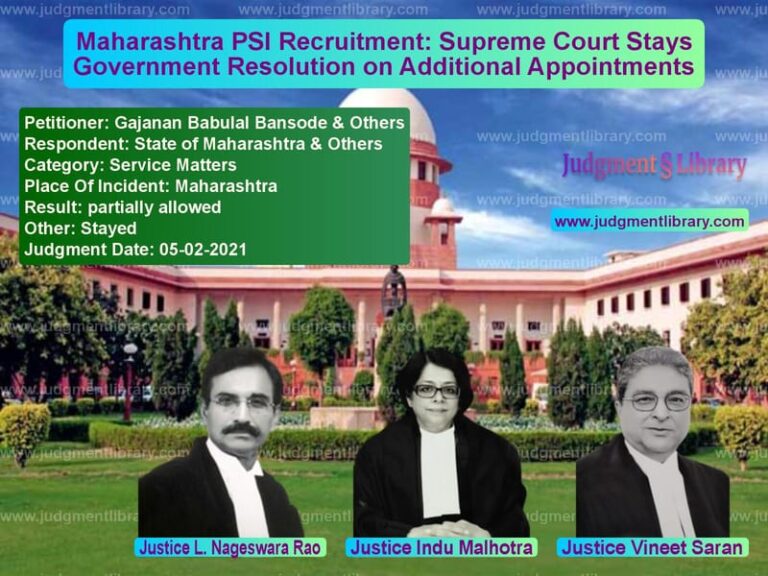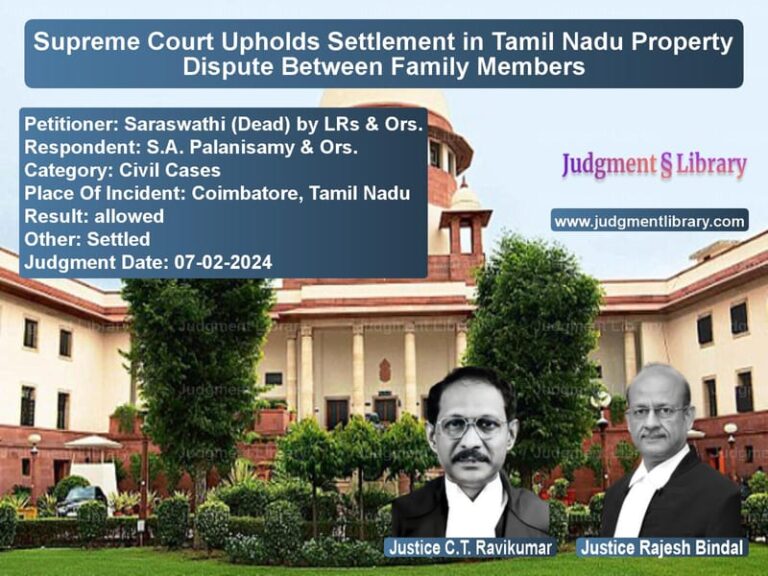Supreme Court Orders Liquidation of Assets in SEBI Scam: Relief for Investors
The case of Balasaheb Keshawrao Bhapkar & Ors. v. Securities and Exchange Board of India & Ors. revolves around the liquidation of assets related to a major financial fraud involving the Sai Prasad Group of Companies. The Supreme Court, in its judgment dated July 15, 2024, ordered the formation of a High-Powered Sale Committee (HPSC) to oversee the auction of assets and the refund process for defrauded investors.
This judgment underscores the Court’s commitment to investor protection, the regulation of collective investment schemes, and the importance of transparent liquidation processes.
Background of the Case
The petitioners, who were directors of Sai Prasad Properties Ltd. (SPPL) and associated companies, approached the Supreme Court under Article 32 of the Constitution, seeking directions for the liquidation of assets and the refund of money to investors. The case arose from regulatory actions by the Securities and Exchange Board of India (SEBI) against multiple companies for running illegal collective investment schemes.
Key Facts
- The petitioners were directors of the Sai Prasad Group, which included SPPL, Sai Prasad Foods Ltd. (SPFL), and Sai Prasad Corporation Ltd. (SPCL).
- SEBI received complaints in 2010 about unauthorized fundraising through collective investment schemes.
- SEBI issued orders in 2013 and 2015 restraining the companies from collecting further funds and freezing their assets.
- A forensic audit revealed that over ₹4,700 crores were collected from investors.
- Several properties and assets were attached, and criminal cases were filed in multiple states.
- The petitioners were arrested in 2016 and remained in custody for over eight years.
Arguments by the Petitioners
The petitioners contended:
- SEBI and other authorities were delaying the liquidation process, causing hardship to investors.
- They should be allowed to assist SEBI in identifying genuine investors and refunding their money.
- SEBI lacked the infrastructure to conduct timely public auctions for the attached properties.
- They should be granted interim bail to facilitate the refund process.
Arguments by SEBI
SEBI countered:
- The fraudulent schemes had affected thousands of investors across multiple states.
- Liquidation was complex due to legal disputes, encumbrances, and the need for proper valuation.
- A structured approach was needed to ensure fair asset sales and equitable refunds.
- The petitioners were responsible for the fraud and should not be allowed direct involvement.
Supreme Court’s Observations
The Supreme Court acknowledged the complexity of the case and the need for a structured liquidation and refund process.
1. Formation of High-Powered Sale Committee (HPSC)
The Court constituted the HPSC to oversee asset sales and refund processes. The HPSC includes:
- Former Supreme Court judge as Chairperson.
- Former High Court judge as Member.
- A SEBI nominee officer.
- State revenue officers from affected states.
- A retired Supreme Court Registrar as Member Secretary.
2. Auction of Assets
The Court directed SEBI to auction the attached properties under HPSC supervision. The process includes:
- Verification of property ownership and encumbrances.
- Engagement of certified valuers to determine market rates.
- Public auctions through transparent e-bidding platforms.
- Deposit of sale proceeds into a dedicated escrow account.
3. Refund Process for Investors
The HPSC was tasked with developing a systematic refund process, including:
- Identification of genuine investors and their investment amounts.
- Public notices inviting investor claims.
- Verification of claims through documents and transaction records.
- Phased disbursement of refunds, prioritizing small investors.
4. Interim Bail for Petitioners
The Court granted interim bail to the petitioners, stating:
“In light of the prolonged incarceration and the need for their cooperation in asset liquidation, interim bail is granted subject to compliance with HPSC directives.”
Supreme Court’s Final Verdict
The Supreme Court ruled:
- The HPSC would oversee the liquidation of assets and refund process.
- The petitioners would remain on bail but must assist in investor identification.
- SEBI would continue legal proceedings against the companies.
- The HPSC would submit progress reports to the Supreme Court every three months.
Conclusion
The Supreme Court’s decision in Balasaheb Keshawrao Bhapkar & Ors. v. SEBI & Ors. ensures investor protection and the transparent liquidation of assets linked to fraudulent schemes. The ruling sets a precedent for regulatory intervention in financial fraud cases and emphasizes the judiciary’s role in overseeing large-scale financial disputes.
Petitioner Name: Balasaheb Keshawrao Bhapkar & Ors..Respondent Name: Securities and Exchange Board of India & Ors..Judgment By: Justice Surya Kant, Justice K.V. Viswanathan.Place Of Incident: Multiple States in India.Judgment Date: 14-07-2024.
Don’t miss out on the full details! Download the complete judgment in PDF format below and gain valuable insights instantly!
Download Judgment: balasaheb-keshawrao-vs-securities-and-excha-supreme-court-of-india-judgment-dated-14-07-2024.pdf
Directly Download Judgment: Directly download this Judgment
See all petitions in Corporate Compliance
See all petitions in Bankruptcy and Insolvency
See all petitions in unfair trade practices
See all petitions in Judgment by Surya Kant
See all petitions in Judgment by K.V. Viswanathan
See all petitions in allowed
See all petitions in Modified
See all petitions in supreme court of India judgments July 2024
See all petitions in 2024 judgments
See all posts in Corporate and Commercial Cases Category
See all allowed petitions in Corporate and Commercial Cases Category
See all Dismissed petitions in Corporate and Commercial Cases Category
See all partially allowed petitions in Corporate and Commercial Cases Category







